''Everything is faceless and dead'': Admiralty Settlement is 300 years
7 Days: from Nizhnekamsk ecocatastrophe near Prosti village to Sakina Shaimieva's lying-in-state
Sad news marred the last week – Sakina Shaimieva, 80, passed away. Hundreds of people came to say goodbye to the spouse of the first president and state adviser of the Republic of Tatarstan. Nizhnekamsk District is on the verge of ecological catastrophe – a landfill of abandoned car tyres has been burning for a month already. Admiralty Settlement has celebrated its 300 th anniversary. But a deafening silence reigned in Kirov District. This and other news of the week was in the foundation of 7 Days informative and analytic programme, which airs on TNV channel. Realnoe Vremya's review tells the details.
Example of real marital love
Last Friday morning began with the sad news for residents of Tatarstan – first President and State Adviser of the Republic of Tatarstan Mintimer Shaimiev's spouse Sakina Shaimieva, 80, passed away. The Islamic funeral prayer was read for the dead at 13.00 at Marjani Mosque, many people came to the lying-in-state.
Shaimieva couldn't bypass others' pain. She tried to help everyone who was in complicated life circumstances. Even if it was an ordinary cleaner or a milkmaid. She didn't refuse to help anybody. Few people know she bought out all goods of countryside people selling on the road understanding how tough their life was and trying to make it somehow easier. But these good deeds, as a rule, remained unnoticeable. This is all about Sakina Shaimieva, impressive kindness and modesty were the main features of her character.
Sakina Shaimieva could be often seen at official meetings. She always looked fashionable, without excessive make-up and bombastic hairdos. Women of her age followed the president's spouse's example trying to learn her noble manners. Everything in her was natural, including beauty. Having seen her once, Mintimer Shaimiev understood this smiling girl with long braids stole his heart forever. Their first acquaintance was at the dance in a simple countryside club in spring.
After the wedding, the family moved to Mulsyumovo, then to Menzelinsk. They moved to Kazan in 1967 where their two children were born. The Shaimievs lived 57 years together. It was an example of real marital love and loyalty.
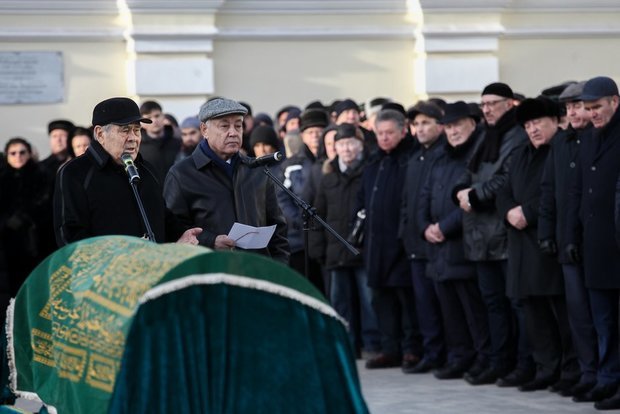
In her book of memories, Sakina Shaimieva wrote it was happiness for her to remain in the shadow of her spouse. It's also a feat to dedicate your life to another person. To be always near, to support, to be not just a wife but also a close friend and dearest. In the last minutes of her life, she was happy because all dear people were with her. And he was with her. She smiled and whispered ''thanks'' for the last time.
Nizhnekamsk on verge of ecocatastrophe
Nizhnekamsk District is on the verge of ecological catastrophe. A landfill of abandoned car tyres has been smouldering near Prosti village (about 11 km far from Nizhnekamsk) for a month already. The poisonous landfill appeared as a result of the business of Nizhnekamsk Tyre complex, and residues had been accumulating there since the Soviet era. It became almost abandoned during privatisation.
The landfill at the bottom of a ravine near Prosti village appeared in 1980. Defective products and production wastes were brought here from Nizhnekamskshina PJSC for 15 years. In 1995, the area was covered with a layer of soil of two metres in depth, the perennial grass was planted, and it was forgotten.
The landfill reminded of its existence a month ago, on 19 October, when a great a plume of smoke arose in the sky above the village. According to the Ministry of Emergency Situations, the area of open fire totalled 6,000 square metres, it's the one-fifth of the landfill. While firefighters were putting the fire out, KAMAZ trucks brought sand to the site. There was only one task – not to allow the fire to spread. It became possible to stop the fire on the fourth day. But the landfill continues smouldering one month later by poisoning the air in Prosti village, which is less than a kilometre far from the site.
''Toxic substance go into lungs, then into the blood and the brain. For this reason, people have headaches, an allergic reaction,'' Director of the regional office of the Tatarstan Administration of Federal Service for the Oversight of Consumer Protection and Welfare Rustem Iziyatullin explained.
Several administrative cases opened on the landfill fire and air pollution in Prosti village opened – by the Federal Service for the Oversight of Consumer Protection and Welfare, the Federal Service for Supervision of Natural Resource Usage, the Federal Service for Veterinary and Phytosanitary Surveillance. The case is that the landfill is located on farmlands. It still remains to calculate the damage to the environment. It's just known that about two million rubles have been spent to put the fire out during the month.
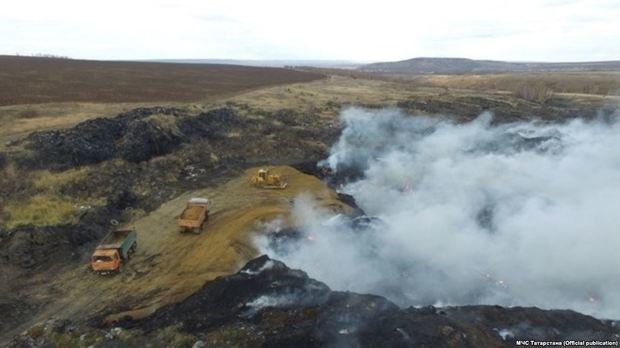
According to the version of fire investigators, grave robbers were likely to set fire to the landfill. They had been acting here in the last 10 years. In addition, they acted openly, using heavy equipment.
''Law enforcement agencies are identifying these people to take further measures,'' said head of the Executive Committee of Nizhnekamsk District Aydar Saifutdinov.
This week, officials of the district have claimed to repeatedly turn to the Tatarstan Ministry of Ecology asking to finance the re-cultivation of the troubled landfill. Did they need to wait for an emergency to solve the problem? By preliminary estimates, at least 100m rubles are needed.
Aydar Sayfutdinov assured journalists that firefighters planned to localise the smouldering waste on the landfill until 21 November. They counted on their own forces and the weather only – weathermen forecast long-awaited snow.
The bleak present of Admiralty Settlement
Peter the Great established Admiralty and Shipyard in Kazan 300 years ago, in 1718. If this event is celebrated everywhere, it doesn't have a birthday man because today every person in Kazan can understand the concept of admiralty difference because there is none.
What can be called Admiralty today? The abandoned territory that catches the eye of any passer-by? Semi-abandoned embankments of Kazan full of industrial wastes where ships were once built? It was said in 2011 that Kazan would approach the jubilee of Admiralty with all guns blazing. But a deafening silence reigns in Kazan's Kirov District.
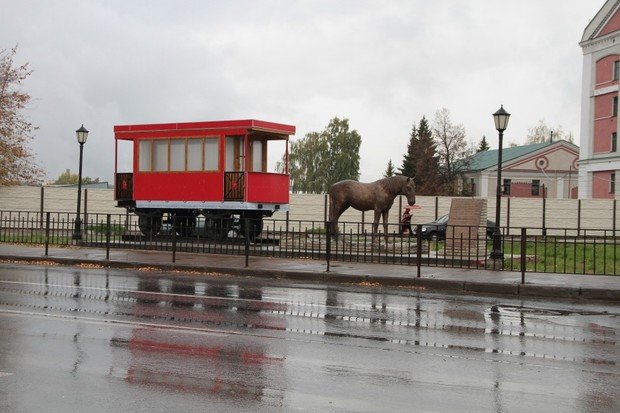
Probably everyone knows Petrushka Passing. Many people have also probably seen a monument to a Kazan horsecar, which has been recently erected on private money. A horsecar is the first Kazan public transport. Horses pulling wagons loaded with people on the rails appeared in Kazan in 1875. Citizens enjoyed this spectacle 25 years before the appearance of electric tramways. And the monument has been erected here because one of the final stops was not far from here – Far Ustie, the headquarters of the horse railway was also here. It's stables, repair workshops, in a word, a shed. The last tramways left the historical building in 2007, the venue is in a semi-destroyed state.
''It was necessary to open a parking zone in this place and use the shed for tourists. How awesome it would be to revive this piece of the horse car. It would be a symbol of revival of Admiralty,'' thinks ethnographer Aleksey Klochkov.
Today Admiralty Settlement is grandiose abandoned territories. Empty, faceless and dead venues of Santekhpribor are instead of the previous 19 th-century picturesque Tivoli gardens. Everything is faceless and dead wherever you look. There is a naked statue at the crossing of Klara Tsetkin and Uritsky Streets – ruins of the family nest of legendary Kazan industrialist Ivan Alafuzov. That's all left from Alafuzov's tanneries.
Alafuzov bought his famous flax mill, which is also empty now and every citizen of Kazan sees it at least rarely, from industrialist Ivan Kotelov. Where is Kotelov's house? Does it exist? Citizens rarely had to visit the backyard of the flax mill. By the way, Kotelov's unique house partially made of stone has been standing here since 1833, hidden from prying eyes.
''95% of citizens of Kazan don't know what a brilliant is hidden behind Gladilov Street because Kotelov's house was separated from former Arkhangelsk Street by historical buildings of the 30s. The building was built partially of stone. Kazan doesn't have such houses anymore. The place is unique,'' Aleksey Klochkov tells.
What will happen to it? Will this all exist? There aren't answers yet. There is a concept to develop the settlement. And this concept, for instance, suggests that new houses will be erected instead of the former Alafuxov factories. Though the family nest will remain, it needs to be restored. A new tramway museum for children is supposed to appear in the old abandoned tramway shed. A tourist route of the horse car will probably be created in the settlement. Will this all really happen in the near future?
The project of the museum and exhibition complex as well as the development project of whole Admiralty Settlement created in the architecture university is surprising and wide. A leisure park with museums, exhibitions, huge installations and embankments will appear in the place where ships used to be built in Kazan in the past. The famous gallery Tver founded by Catherine the Great, which burnt in 1956, will also be recreated.
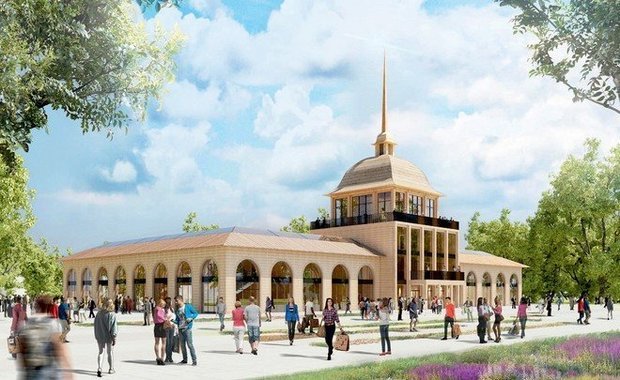
This tormented project is now to be approved in Moscow and expecting co-financing from the federal budget. We're talking about hundreds of millions of rubles. It seems that nothing has been done over these years. Huge money has already been spent on ecological rehabilitation of Admiralty Pond, tens of hectares of the pond side were put into shape and expect further replenishment. There will be both a pumping station and treatment facilities now. And it's dramatic changes given their necessity for the whole settlement.
The further fate of the humpback bridge concern the locals a lot – it's a trademark of the old bed of the Kazanka River. It's 90 years, it's been in an emergency state since the last century. Even tramways used to ride over the bridge, today there are fences separating even from pedestrians. And the problem is natural because this bridge is very close to them. Will it survive?
''It might seem the bridge is losing its function as a connection. But it can become both an art facility and a site for exhibitions. This is why we all dream if the development concept of Admiralty becomes a reality, the bridge will become its adornment and connect two banks of the park,'' thinks the Tatarstan president's aide Olesya Baltusova.
United Russia needs reboot
On Saturday, the Tatarstan regional office of United Russia party drew conclusions for 2018 and projected plans for 2019.
It seems that the words ''update'' and ''reboot'' can be heard backstage of the 28 th conference more often. The election campaign in the country's regions proves that novelties are needed at the federal level. Governors from United Russia from four regions of the country couldn't win the election.
''They turned the election campaign into a holiday planning organisation and calculated that this was a way to attract citizens to the election campaign, that we are fine. And they should have met with the population personally,'' Russian State Duma deputy Ildar Gilmutdinov is sure.
United Russia lost positions at legislative meetings in another three regions. It's a mistake of the party, political strategists, experts, specialists,'' Ildar Gilmutdinov thinks.

United Russia will have to do an exam in Tatarstan in 2019 – it's election to the State Council, and the president will be chosen in 2020.
''The countryside is our major electorate, a voting electorate. We should pay greater attention to develop rural territories, not only cities. It's very important,'' said Russian State Duma deputy Ayrat Khayrullin.
The governors who lost the election lacked one thing – the skill to listen to people, Ildar Gilmutdinov stressed. While it's one of the main criteria of work, noted Secretary of the Political Council of the Tatarstan regional office of United Russia Farid Mukhametshin. The Tatarstan State Council, where most deputies come from United Russia, has received over 2,500 of addresses and wishes of voters since 2014. Over 70% of instructions are carried out. Naberezhnye Chelny is the leader in effectiveness.
Discussions on the spot called Update 2018 preceded a big regional conference in the republic. They gathered ideas and offers to increase the effectiveness of the party's work.
Head Doctor of Republican Clinical Hospital Rafael Shavaliyev thinks that special attention should be paid to the older generation's health. The second task is to reduce mortality from cardiovascular diseases, the third one is to implement screening programmes to detect early types of cancer.
The best offers, which include both updates in the party and improvement of work, will be announced at the upcoming session in Moscow. The party members chose seven delegates at the conference on Saturday by secret vote who will represent Tatarstan at the All-Russian Session on 7 December.
Ruble voting
Self-taxation referendums were held in 844 rural settlements of Tatarstan on 18 November. It's a voluntary decision of the citizens to raise money to solve local problems.
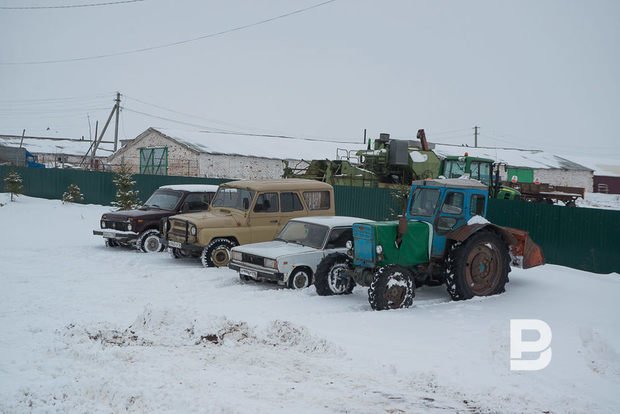
In Pestretsy, citizens decided what to spend their own money on – to construct pavements, playgrounds for children or repair roads inside the settlements. At least 50% of citizens of a village must go to the referendum to really use the raised money for a common, good deed. The decision will be considered made if a half votes ''for''.
What problems are solved with the money of the population through self-taxation? The statistics in Tatarstan are the following: 51% of all raised money is roadworks, 20% of residents allocate money to improve a settlement's territory, 10% — for water supply, 8% — to improve and maintain cemeteries, 3,6% — to construct and improve sports and children's playgrounds.
Aksubayevo settlement is an illustrative example in this respect. The municipal centre's priorities are a bit different from the countryside's requests. Of course, a part of the money is spent on both roads and illumination. But we can say there has been recently a boom in children's playgrounds in Aksubayevo. Six children's playgrounds have been built in the self-taxation programme, another three are planned next year.
But countryside residents are loyal to traditions at the moment. Roads and water supply issues are more important than others now. And there is another characteristic detail – people in the countryside are, as a rule, more united regarding self-taxation. For instance, collection in the programme in Starokiyazlinsk village in Aksubayevo District has reached 100% during these years.
Residents of Starouzeyev settlement also plan the self-taxation programme accurately and in detail. They managed to raise over 4 million rubles over four years of the self-taxation programme. The money was used to lay roads, build a bridge and other needs.